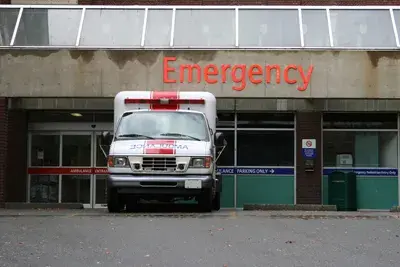A new study from the “UCLA Center for Health Policy Research” reports that the expansion of Medicaid under the Affordable Care Act (ACA) may lead to considerable increase in the use of emergency rooms (ER) and hospitalizations for previously uninsured people, but that increase will largely prove to be temporary and may not create a serious impact on state budgets. As part of the analysis, researchers evaluated two years of medical claims data for about 2,000 Californians (including patients who got enrolled in public health programs well in advance of last January’s expansion of Medi-Cal, the state’s version of Medicaid).
The primary objective behind the UCLA study (which was funded by the California Department of Health Care Services and Blue Shield of California Foundation) was to simplify the Medicaid expansion process by offering health insurance to those low-income people who were not eligible for Medi-Cal at that point but would become eligible when the health law’s expansion rule fully comes into effect. Researchers divided the group into 4 different categories (based on individual assessment of each specific category’s pent-up demand for health care).
It was found that people who were insured (after long periods of being uninsured) used hospital emergency departments three times more during the initial 3 months of coverage and later cut back significantly in the subsequent months. The hospitalization rate (for the “highest pent-up demand” group) was initially high and subsequently reduced by almost 80% within the two-year period 2011 – 2013. However, the emergency room and hospitalization rates reduction should have led to higher outpatient visits. But this was not the case as the rates of outpatient visits remained constant during the 2-year period.
Researchers point out that the Medicaid expansion could potentially lead to high-cost for the low-income group and this analysis would ease those problems. The findings indicate that the growing concerns about Medicaid expansion being financially unsustainable into the future are unfounded. Under the ACA, the federal government pays states 100% of the cost of newly eligible under the Medicaid expansion. But, it is expected that in 2017, that contribution will be phased down until it reaches 90% in 2020.
According to a tally from the Kaiser Family Foundation, out of the 27 states and a District of Columbia implementing a Medicaid expansion, 21 states have not yet implemented and in two states Indiana and Utah, the decision about health plan expansion is still an open discussion.
Medicaid officials say that the study results were quite consistent with what they planned to do by expanding health insurance access. Their next step would be healthcare homes to ensure that patients actually receive better care.
They feel that better coordination efforts for Medi-Cal beneficiaries is one of the prominent factors that helped to drive-down the higher rates of use.



0 Comments